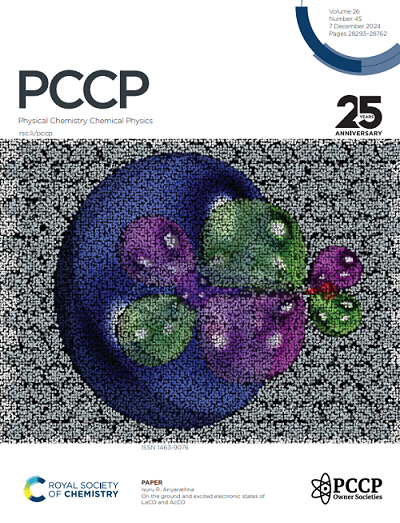IF 2.9
3区 化学
Q3 CHEMISTRY, PHYSICAL
引用次数: 0
摘要
环氧树脂是一种广泛使用的聚合物。然而,当它暴露在辐射环境中时,会产生高活性自由基,从而影响其物理和化学结构。在这项研究中,石墨烯量子点作为自由基清除剂被集成到环氧树脂基体中,以增强其在辐照环境中的稳定性。值得注意的是,环氧树脂的氧化层厚度约为 480 μm,而石墨烯量子点/EP 纳米复合材料的氧化层厚度要薄得多,约为 180 μm。辐照后,环氧树脂的机械性能降低了 49%,玻璃化转变温度降低了 4.4 °C。相比之下,GQDs/EP 纳米复合材料的机械性能降低了 35%,玻璃化转变温度仅降低了 2.2 ℃。这些发现表明,GQDs 纳米粒子能有效增强环氧树脂的抗辐射性能。此外,我们还探讨了 GQDs 清除环氧树脂基体中自由基的机制。本文章由计算机程序翻译,如有差异,请以英文原文为准。
Graphene quantum dots reducing oxidation behavior and mechanical damage of epoxy resin irradiated by γ-rays
Epoxy resin is a widely used polymer. However it will generate highly reactive free radicals when exposed to radiation, which impacts its physical and chemical structure. In this study, graphene quantum dots were integrated into the epoxy resin matrix as free radical scavengers to enhance its stability in irradiated environments. Notably the oxide layer of the epoxy resin measured approximately 480 μm in thickness, whereas that of the GQD/EP nanocomposites was significantly thinner, at about 180 μm. After irradiation, the mechanical properties of the epoxy resin decreased by 49%, and the glass transition temperature decreased by 4.4 °C. In contrast the mechanical properties of GQDs/EP nanocomposites decreased by 35%, and its glass transition temperature decreased by only 2.2 °C. These findings indicate that GQDs nanoparticles can effectively enhance the radiation resistance of epoxy resins. Furthermore, we explored the mechanism by which GQDs scavenge free radicals within the epoxy resin matrix.
求助全文
通过发布文献求助,成功后即可免费获取论文全文。
去求助
来源期刊

Physical Chemistry Chemical Physics
化学-物理:原子、分子和化学物理
CiteScore
5.50
自引率
9.10%
发文量
2675
审稿时长
2.0 months
期刊介绍:
Physical Chemistry Chemical Physics (PCCP) is an international journal co-owned by 19 physical chemistry and physics societies from around the world. This journal publishes original, cutting-edge research in physical chemistry, chemical physics and biophysical chemistry. To be suitable for publication in PCCP, articles must include significant innovation and/or insight into physical chemistry; this is the most important criterion that reviewers and Editors will judge against when evaluating submissions.
The journal has a broad scope and welcomes contributions spanning experiment, theory, computation and data science. Topical coverage includes spectroscopy, dynamics, kinetics, statistical mechanics, thermodynamics, electrochemistry, catalysis, surface science, quantum mechanics, quantum computing and machine learning. Interdisciplinary research areas such as polymers and soft matter, materials, nanoscience, energy, surfaces/interfaces, and biophysical chemistry are welcomed if they demonstrate significant innovation and/or insight into physical chemistry. Joined experimental/theoretical studies are particularly appreciated when complementary and based on up-to-date approaches.
 求助内容:
求助内容: 应助结果提醒方式:
应助结果提醒方式:


